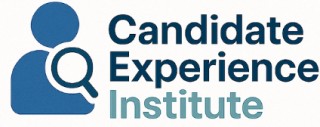
The Importance of Full Life Cycle Recruiting
The Core Necessity of Holistic Recruitment
In today's competitive job market, a structured approach to hiring is not just beneficial—it's vital. Understanding the recruiting full cycle and its importance in acquiring the right talent is indispensable for any organization intent on sustaining its growth and reputation. The full life cycle recruiting model encompasses every stage of the recruitment process, from sourcing candidates to onboarding new hires. Companies that diligently follow the life cycle process stand to gain substantial benefits. These include a more organized recruitment cycle, a smoother hiring process, and ultimately, a greatly enhanced candidate experience. A well-executed full cycle ensures that both recruiters and candidates are aligned towards mutual fulfillment. Measuring success in this holistic framework requires examining both qualitative and quantitative metrics. While efficiency in filling positions swiftly remains crucial, the nuances of candidate experience equally hold significant value. Engaging candidates positively during the recruitment life stages is as vital as any tactical objective. Moreover, integrating interim solutions in candidate experience supports maintaining a seamless recruitment process. By recognizing the full lifecycle's importance, hiring managers and their teams can strategically fill roles with top-notch talent, ensuring each job description is met with the best fit. Exploring the full spectrum of the hiring process leads to not only meeting organizational goals but exceeding candidate expectations, thus building long-term relationships and enhancing overall recruitment cycle success.Stages of Full Life Cycle Recruiting
Understanding Key Phases of the Hiring Journey
Recruiting is a complex journey that spans several critical stages, each designed to ensure that the most suitable talent is identified and onboarded efficiently. The recruitment process functions as a full cycle, beginning with the initial stage of determining the job requisition and concluding with the onboarding of new hires. Here's a closer look at each major stage involved:- Sourcing and Attraction: This initial stage focuses on identifying and attracting potential candidates. Recruiters leverage various sourcing channels to connect with talent, ensuring that the job description matches the ideal candidate’s skill set.
- Application and Screening: Once candidates apply for the job, the screening process commences. Here, recruiters filter through applications, resumes, and cover letters to shortlist potential candidates whose skills align with the job requirements.
- Interviewing: The recruitment life cycle advances to conducting interviews. This stage is crucial for both the candidate experience and the hiring manager's evaluation. It typically involves multiple interview rounds to assess capabilities and cultural fit.
- Selection and Offer: Post-interview, hiring managers and recruiting teams collaborate to select the best candidates. The selected candidates receive job offers, which marks a turning point in transforming prospective hires into confirmed new employees.
- Onboarding: Once offers are accepted, the onboarding process begins. This stage is vital for integrating new hires into the organization, ensuring a seamless transition that enhances their early experience and productivity.
Challenges in Full Life Cycle Recruiting
Overcoming Roadblocks in Recruiting
While the full life cycle of recruiting aims to streamline the recruitment process from sourcing to onboarding, challenges frequently arise that can impede the process. Recognizing these hurdles is a step toward improving both efficiency and candidate experience.
The recruitment cycle often faces issues such as sourcing quality talent, managing time effectively, and ensuring a seamless onboarding procedure. Recruiters and hiring managers need to tackle these challenges head-on to avoid bottlenecks in the hiring process.
One significant challenge is effective communication between the recruiting team and candidates. A lack of clear communication can lead to candidate disengagement and decreased satisfaction. Another hurdle is maintaining consistency in the recruitment life cycle. This includes everything from job description creation to a job offer being extended. Consistent processes ensure candidates receive a standardized experience, which is critical for your company's reputation.
Additionally, potential biases in the recruiting process can lead to disparities in talent acquisition. Ensuring diversity and inclusion throughout the hiring stages not only enriches the organizational culture but also widens the talent pool. Addressing these challenges requires an agile approach allowing recruiters to adapt swiftly and ensure a positive candidate experience.
Employers might also grapple with the time-to-hire metric, which measures the duration to fill a position. A lengthy recruitment process can lead to losing highly sought-after candidates to competitors. Implementing strategic onboarding practices can mitigate delays, ultimately enhancing the overall candidate experience.
Strategies to Enhance Candidate Experience
Key Strategies to Improve Engagement and Satisfaction
Enhancing the candidate experience is crucial. Success hinges on strategic actions throughout the recruitment process. These measures can improve engagement and satisfaction.- Clear Communication: Timely and transparent communication is key. Keep candidates updated at every stage of the recruitment process, ensuring clarity about next steps and timeframes.
- Personalized Interactions: Tailoring your approach by acknowledging individual candidate qualities reflects a candidate-centered culture. Demonstrating genuine interest can greatly improve candidates' perceptions.
- Efficient Processes: Streamlining the life cycle can reduce the time-to-hire, minimizing candidate drop-offs. This includes refining the sourcing and interviewing phases to prevent bottlenecks.
- Feedback Mechanism: Providing constructive feedback, even after unsuccessful applications, demonstrates respect and promotes a positive experience.
- User-Friendly Technology: Leveraging technology for a smoother application and interview process is beneficial. Intuitive platforms enhance candidates' convenience and engagement.
- Comprehensive Onboarding: Implementation of a thorough onboarding process is the final touch in a seamless cycle recruiting. It ensures not only effective integration but also a lasting positive impression.
Technology's Role in Full Life Cycle Recruiting
Integrating Technology in the Recruitment Process
In the ever-evolving world of recruitment, technology has become an indispensable ally in enhancing the full life cycle of recruiting, particularly in improving the candidate experience. Leveraging the right technological tools can make a significant impact on the efficiency and effectiveness of the entire hiring process. Firstly, technology streamlines the sourcing and recruiting process by automating routine tasks like resume screening and applicant tracking. This reduction in manual tasks allows recruiters and hiring managers to focus on more strategic aspects, such as engaging with top talent and refining job descriptions. The use of Artificial Intelligence (AI) and Machine Learning in recruitment tools has been reported to significantly decrease time to hire, crucial in competitive job markets. Moreover, technology facilitates better communication and onboarding. Candidate relationship management (CRM) systems provide a centralized platform to manage candidate communications, ensuring timely updates and feedback. This aspect is critical in maintaining a positive candidate experience, as transparency and responsiveness are often cited by candidates as top priorities. During the interview stages, technology also plays a pivotal role. Video interviewing platforms can accommodate candidates who are remote, reducing both time and geographical barriers in the recruiting cycle. These tools help hiring teams to maintain a robust interview schedule, providing flexibility and convenience both to them and to the candidates. Finally, advanced analytics and reporting tools provide insights into the recruitment cycle, enabling teams to measure success and identify areas for improvement. By analyzing recruiting metrics, such as the time it takes to fill a position and candidate satisfaction scores, organizations can continuously refine their recruitment strategies. In summary, the strategic integration of technology in the full life cycle recruiting is key to enhancing the candidate experience. It not only optimizes internal processes for recruiters and hiring managers but also ensures that candidates receive a fair and engaging recruitment experience.Measuring Success in Full Life Cycle Recruiting
Evaluating the Effectiveness of Full Cycle Recruiting
In any recruitment cycle, measuring success is crucial. The ability to gauge how effectively the full life cycle of recruiting meets its goals impacts the entire recruitment process. Here are key metrics and methods to help assess the success of your recruiting endeavors:- Time to Hire: One of the primary measurements in the recruiting process involves timing. It is crucial to track how swiftly the team can move from sourcing candidates to onboarding a new hire. Reducing the time to hire enhances the candidate experience and invariably influences one’s ability to capture top talent.
- Candidate Experience Feedback: Another key factor is directly from the source — the candidates themselves. Gathering feedback on their experiences within the recruitment process can uncover invaluable insights. Was the job description clear? How responsive was the cycle recruiter? These questions can offer data that improve future engagements.
- Quality of Hire: Beyond filling positions quickly, the recruitment cycle's success can also be measured by the quality of the hires. Evaluating how new employees perform can give insight into how well the recruiting team matches talent with the organization's needs.
- Offer Acceptance Rate: This metric highlights how attractive the job offer is to potential hires, indicating the company's competitiveness in the market. A low acceptance rate could suggest the need to reevaluate compensation, benefits, or the communication strategy throughout the hiring process.
- Retention Rate: Long-term success isn't just about onboarding but retaining employees. Analyzing how many recruits stay with the organization over time can determine if the recruitment process indeed aligns with the long-term goals of talent acquisition.













